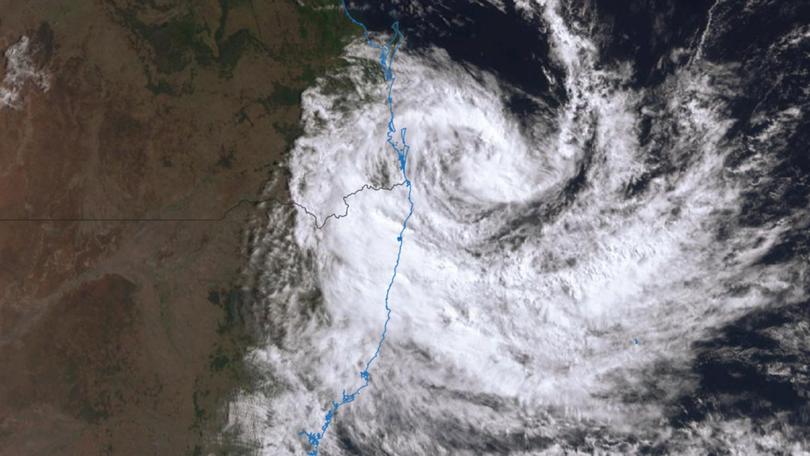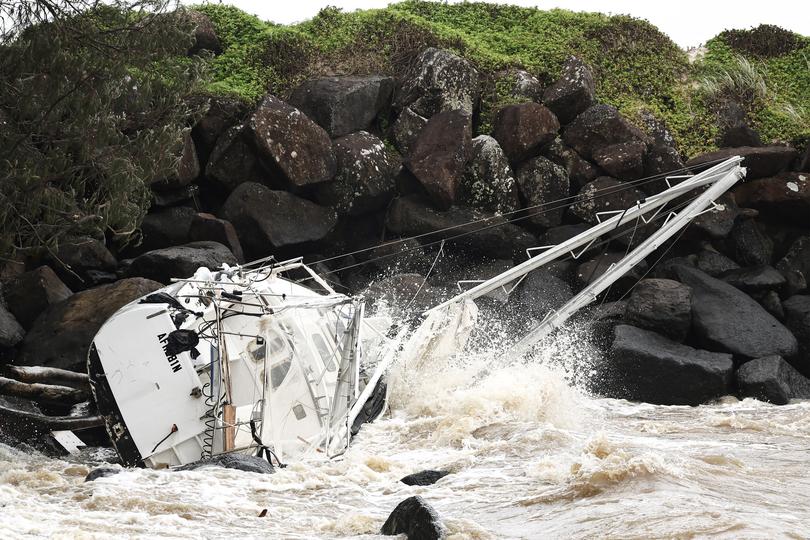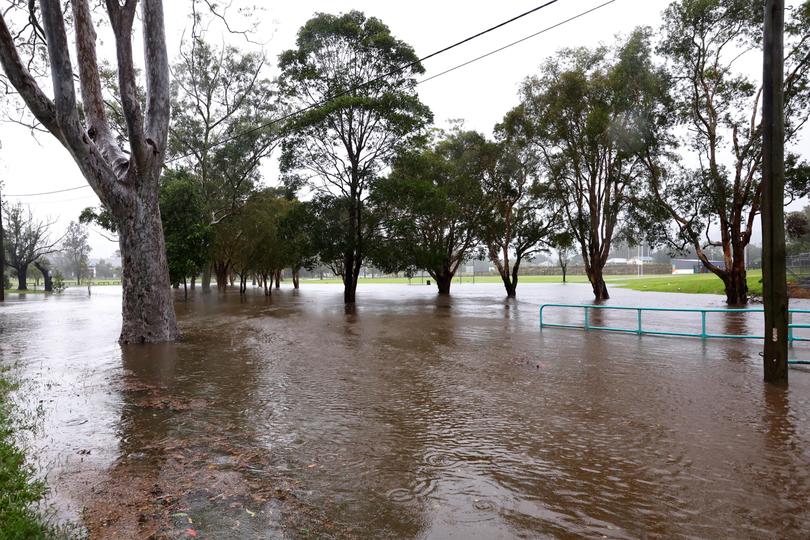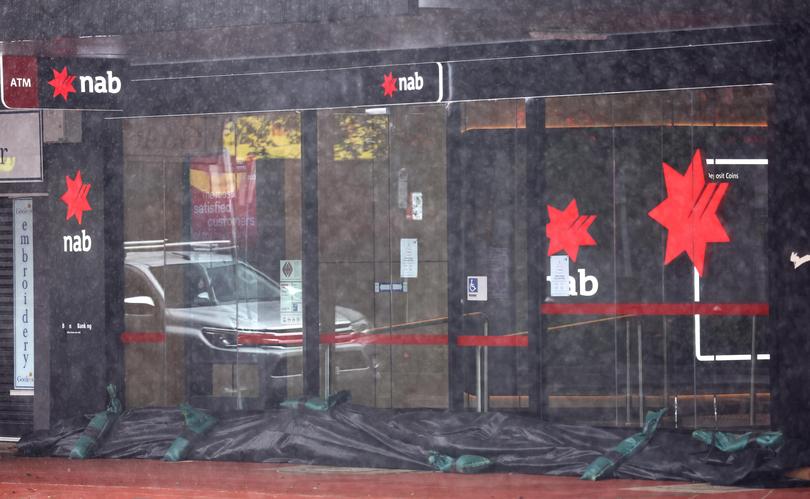Cyclone Alfred: Four million prepare for 150km/h winds, flooding rain as military head to Queensland, NSW

Four million Australians are bracing for Cyclone Alfred to hit land around noon on Saturday, potentially unleashing destructive winds and deadly flooding across northern NSW and southern Queensland.
The storm front has already knocked out power to more than 80,000 homes across Queensland and NSW, triggered the evacuation of towns and suburbs from Tweed Heads to Port Macquarie, and shut thousands of schools across south-east Queensland and northern NSW.
On Friday, as the weather bureau once again pushed back the cyclone’s expected arrival on land, Prime Minister Anthony Albanese sent 120 Defence Force personnel into northern NSW to help the State Emergency Service go door-to-door, checking on vulnerable people and preparing towns for up to 800mm of rainfall over the weekend and into early next week.
Sign up to The Nightly's newsletters.
Get the first look at the digital newspaper, curated daily stories and breaking headlines delivered to your inbox.
By continuing you agree to our Terms and Privacy Policy.After video was broadcast of crowds on the Gold Coast watching surfers ride the huge surf - a 12 metre wave was recorded Wednesday - Mr Albanese warned that coastal areas were particularly dangerous and that people in the cyclone’s path should remain indoors.
“This isn’t a time for sightseeing,” he said. “Please stay safe.”
Nine hours of heavy rain
Alfred is expected to drop from a category 2 to category 1 cyclone as it passes over Moreton Island and approaches Brisbane’s northern suburbs on Saturday. Weather forecasters warned it would still be capable of bringing 150km/h winds and torrential rain for up to nine hours when it makes land.
One of the biggest concerns is that heavy winds will knock trees on to power lines, cutting electricity to homes, mobile phone towers, water-treatment plants and other essential services.


Satellite photography showed the cyclone is affecting weather across most of Australia’s east coast, all the way from Townsville in Queensland’s north to the NSW-Victorian border. In Brisbane on Friday afternoon, though, there was little rain and patches of blue sky.
“Right now, at this point in time, it’s deceptively calm, but we know it’s not too far away at Moreton Island,” Brisbane Mayor Adrian Schrinner said. “They’re getting pounded by gale-force winds and incredibly high surf so that is not too far away.”
More evacuations
In NSW on Friday morning, residents of suburbs near Tweed Heads on the Queensland border, and Brunswick Heads and Port Macquarie were told to leave their homes and seek accommodation with friends, family, or one of the 20 evacuation centres set up for the cyclone.
It followed pre-emptive evacuation orders that had been issued Thursday afternoon to residents of Lismore and villages on the Richmond River because of concerns heavy rain overnight might trigger flash flooding. On Friday, rivers upstream of Lismore began to flood, and residents were told to move to higher ground.

NSW officials remain particularly worried about the town of 45,000, which was built on a flood-plain and has suffered two devastating floods in 2022 that killed five people.
Even Queensland Premier David Crisafulli singled out Lismore in his daily press cyclone conference. “They might not be Queenslanders but they are in our thoughts,” he said after a phone call with NSW Premier Chris Minns, who was in Lismore to help oversee preparations.
Across NSW more than 29,000 homes have been told to evacuate. Government officials said most people had complied.
Power outages
Some 43,000 homes in NSW lost power overnight. By mid-morning electricity had been restored to 5000 of them, but the continued poor weather made it difficult for repair crews to work.
In Queensland, another 45,000 properties had lost electricity by Friday afternoon. Government officials reported that huge surf whipped up by Alfred’s slow progress was causing significant damage to beaches along the Gold Coast.
Inland on the Gold Coast two people were hospitalised after intense winds brought down a large gum tree, crushing a Currumbin Valley home.
“Thankfully, both patients sustained only minor injuries and were transported in stable conditions to the Gold Coast University Hospital,” a Queensland Ambulance Service spokesperson said.

Residents on the islands near Brisbane are particularly exposed, including North Stradbroke Island, where twins were born overnight in the small town of Dunwich. The mother was aided by a midwife and paramedics.
“It’s one of the those little gems in an otherwise very stressful time for everybody,” Mr Crisafulli said.
The Federal Government has promised $50 million to councils in NSW and Queensland to remove waste and debris and repair public property after the cyclone passes.
While Mr Albanese oversees the Federal Government’s response to the cyclone, the weather may be disrupting his plans for a federal election. Political commentators had expected him to call an election this weekend for April 12.
Wariness of being accused of politicising a natural disaster may force Mr Albanese to delay an election to May, after Easter and Anzac Day. The later date would require the Government to go ahead with a Federal Budget on March 25.

